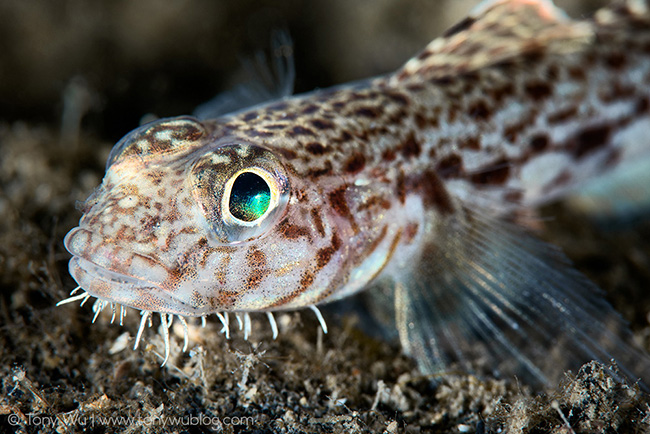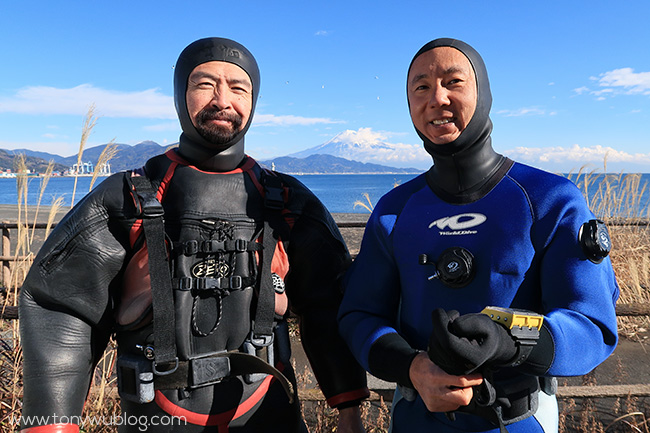The first time I met a hairchin goby (Sagamia geneionema) was in 2006. “Cute whiskers,” I thought, and took this photo to mark the occasion.
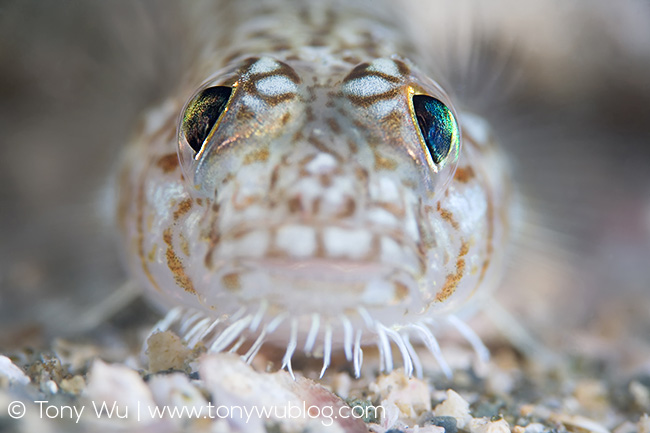
In the years since, I’ve rarely given this fish more than a passing thought, until last month that is. After giving a talk in Shizuoka prefecture, Japan, I had a chance to chat with Tetsu-san, who owns a dive shop and is a lecturer at Tokai University.
I asked about interesting marine life behaviour in the area. He mentioned that sabihaze (サビハゼ), the Japanese name for hairchins, were just entering their reproductive season.
And that was how I found myself in a drysuit for the first time in many years, descending to 20m to lie in silty muck to stare at a 5cm fish in 16°C somewhat greenish water.
I sure know how to live, don’t I?
My objective was to photograph a male goby protecting its clutch of eggs.
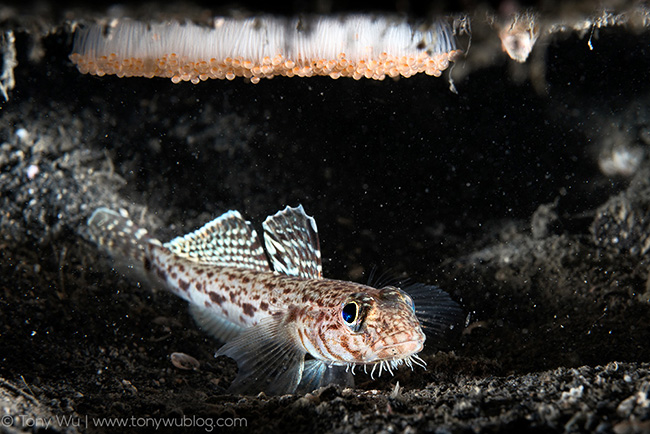
With hairchins, you see, females pick a mate and then deposit eggs on the upper surface of an enclosed area. The male fertilises said eggs, then watches over them —a stoic Sagamia sentinel.
Female gobies of this species, players that they are, head out to eat more and mate again, leaving a string of males in her wake caring for clusters of her eggs. Hmmm.
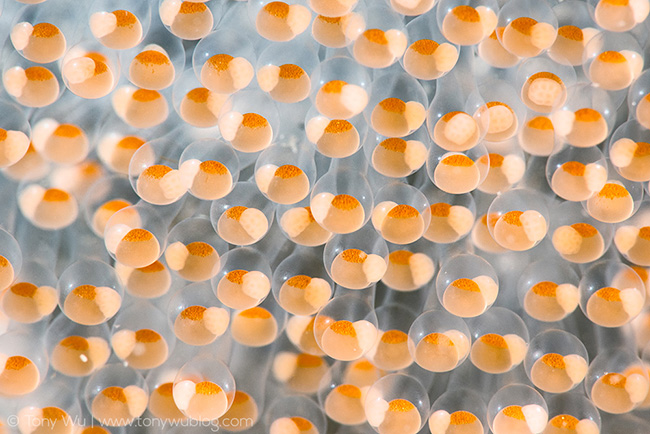
The eggs take a week or two to develop, depending on water temperature. With only a couple of days to dive, I was able to photograph the early stages of larval development, but not to follow the eggs to maturity. That’ll have to wait until next time.
Zoom in a bit as pictured below (different clutch of eggs), and you can see the embryos developing, with heads and gastrointestinal areas attached to the yolk-like bundles of nutrition, caudal regions extended. Cool, huh?
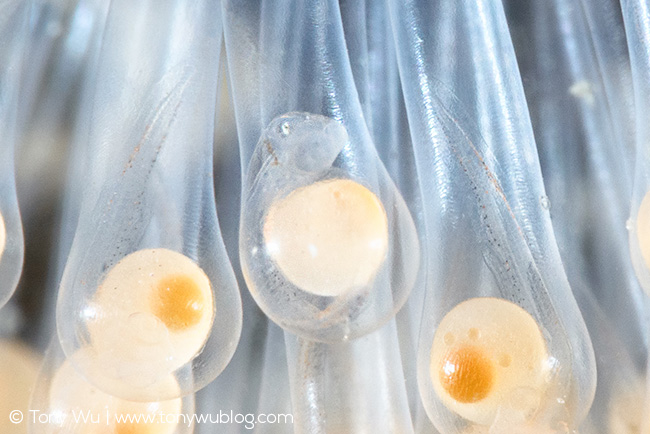
On the day I was supposed to head home (in order to get back to the work I wasn’t doing by choosing to spend time in chilly water waiting for a fish), I ended up procrastinating (even more).
I did a bonus dive in the morning, in hopes that perhaps we could find a clutch of eggs further along in development. No such luck, as it turned out. All the eggs in the area seemed to be at roughly the same developmental stage. Perhaps there is some degree of synchronisation, which wouldn’t be unusual among piscines.
I did, however, get a firsthand look at why male gobies need to remain vigilant. While I was visiting my 5cm friend of the hairy chin, a harlequin perch (Parapercis pulchella), known as a toragisu (トラギス) in Japanese, zipped in to try to snag some eggs. This happened several times, resulting in puffy clouds of stubborn silt that obstructed my view.
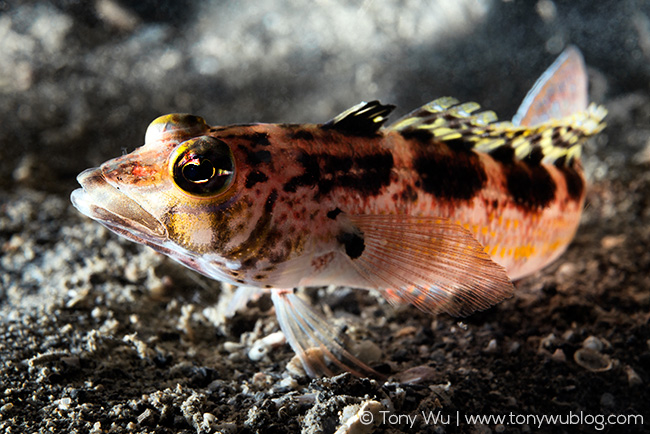
Though I wasn’t able to see everything that happened, I caught tantalising glimpses of the heart-thumping hairchin-vs-harlequin brawl. When the dust settled, the hairchin emerged victorious (I think). The eggs appeared undisturbed, and the harlequin was close to me, appearing for all purposes to be sulking.
Male hairchins don’t have much time to eat, since they have to maintain constant vigil to ensure maximum survival of their progeny.
Tetsu-san tells me that once one clutch of eggs hatches, males will search for more females to try to mate again, prioritising sex over eating. Because, you know, males.
The upshot is that as the breeding season progresses, males exhaust themselves with mating and guarding. Most eventually die from such single-minded behaviour.
I’m sure there’s a lesson in there somewhere.
